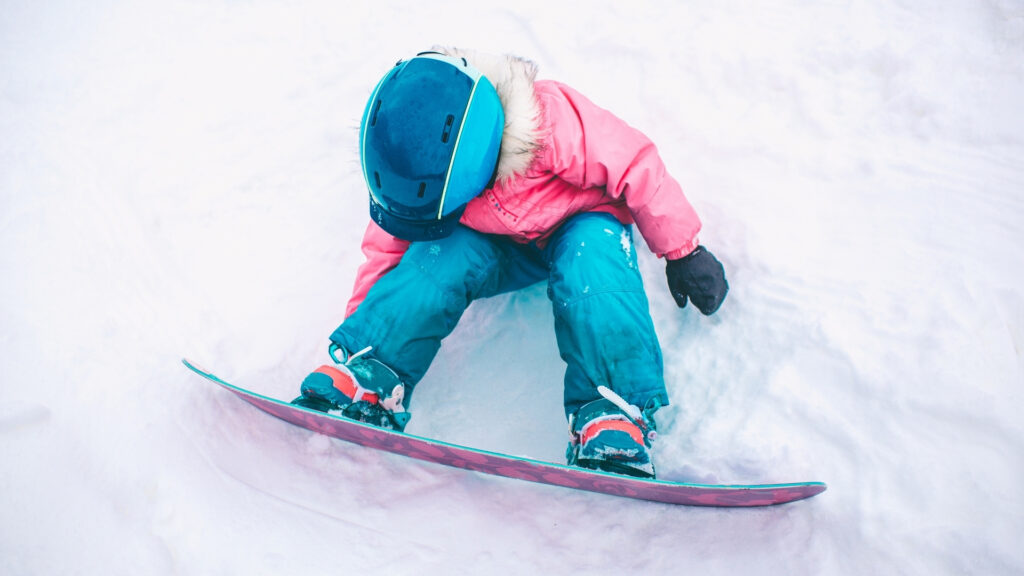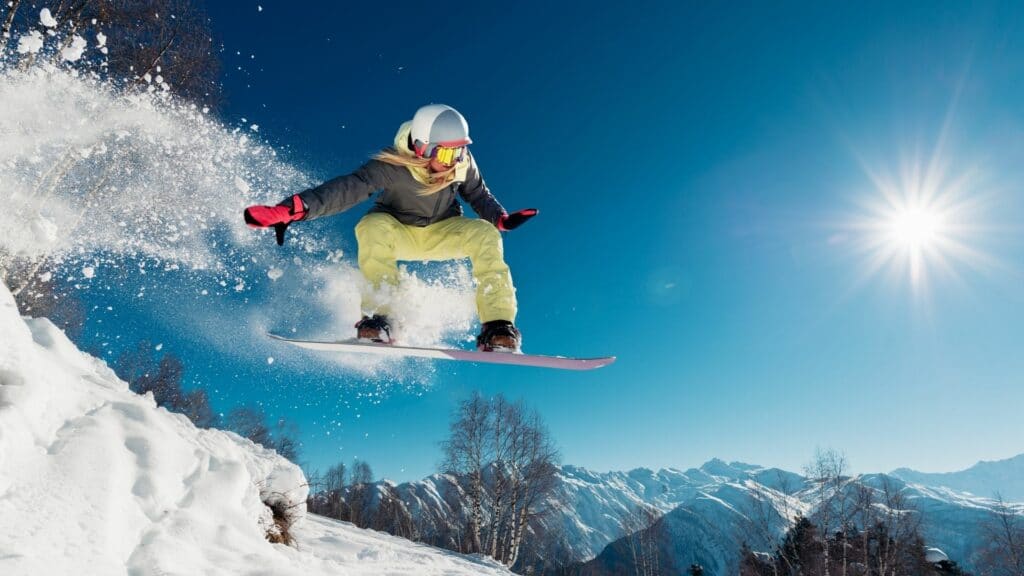Selecting Snowboard Bindings
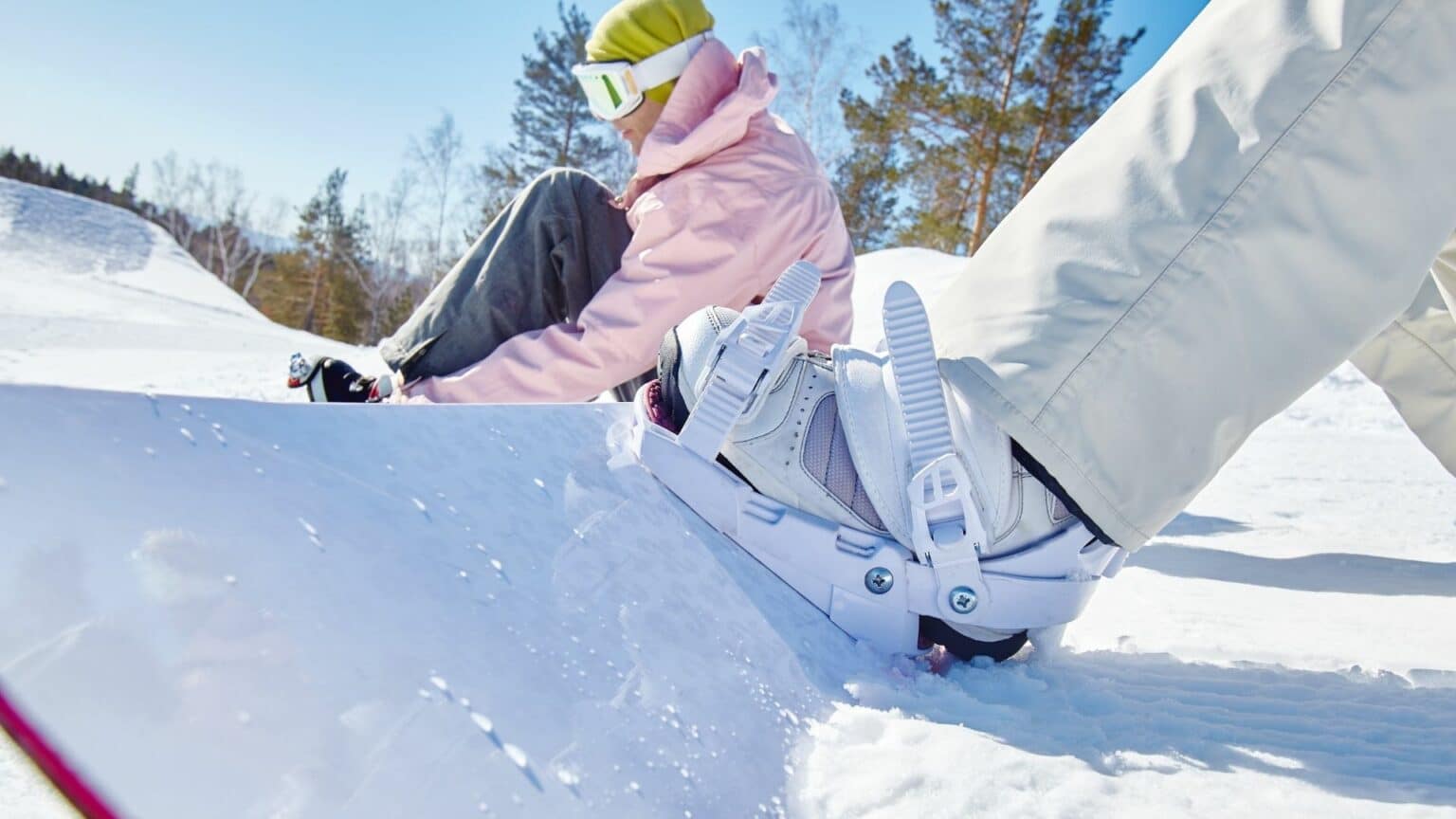
Last Updated: December 12, 2021
Snowboard bindings are an essential part of every rider’s winter gear. It attaches to a snowboard and provides a way to attach your boots to the board. They offer an almost limitless range of adjustments allowing you to get the perfect fit for your boot size, weight and riding style. Snowboard bindings come in all shapes and materials (metal, plastic, wood, metal and plastic connected with metal).
You’ll want to do some research before purchasing a pair because they all affect different aspects of how you ride, including the way it feels under your feet, the amount of control you have on jumps, some increase response time and others lessen sliding friction. Snowboard bindings are a necessity for anyone who spends time on the slopes. A snowboard without bindings, or even with the wrong type of bindings is like having a car without tires in a sense that you have to have it to function as it’s supposed to.
That is why choosing your bindings carefully is one of the most important aspects in building your own custom snowboard. Snowboard bindings have come a long way and have evolved in the past years to meet todays performance, and comfort standards. When it comes to snowboard equipment, bindings are often an afterthought. Most people will spend hundreds of dollars on a new board, boots, and clothing, but when it comes to snowboard bindings, they will scrimp buy buying the cheapest pair.
This is not the best way to go about things. Snowboard bindings belongs in just as much consideration as the rest of your gear. After all, you need something that is compatible with your board and you should avoid anything that can cause injury. Snowboard bindings provide the connection between the rider and board. They allow you to secure your boots to a snowboard and connect you directly to the board.
Bindings are paramount for providing traction and control when riding. While it may seem like the snowboard is what connects you to the mountain, it’s actually the bindings that have influence over how fast you move down hill. At first glance, they don’t seem that important because they are located beneath your boots. But there’s no way you can have a fulfilling snowboarding experience without well-functioning bindings tying you to the board.
Snowboard bindings can vary greatly in terms of materials and technology. The design of snowboards themselves have also evolved significantly over time. These two factors have led to a market of well matched snowboard bindings that are compatible with different riding styles and snowboard characteristics. In this post, we’ll look at some of the basics that you should be aware of when buying new snowboard bindings.
Skating Style
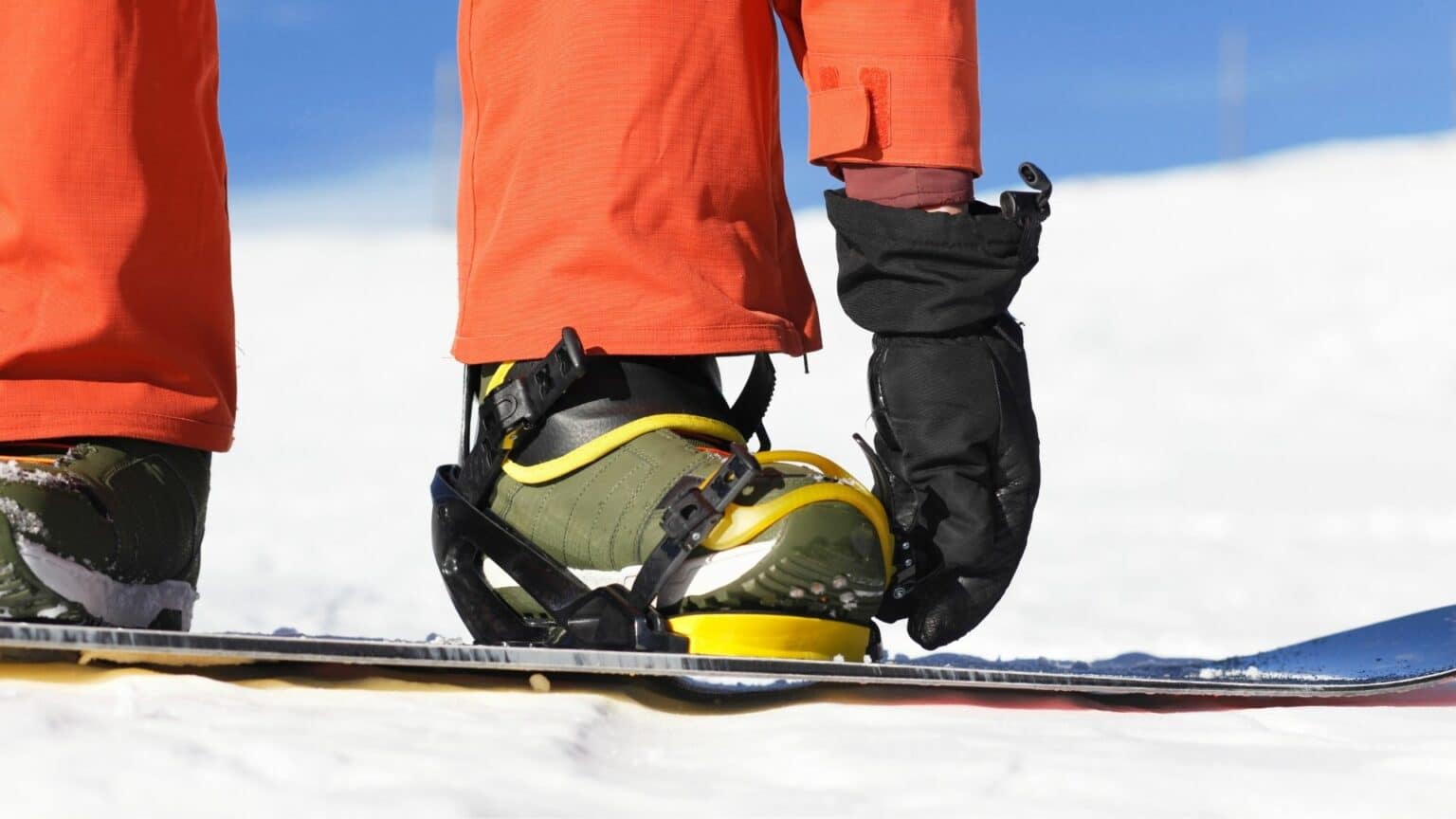
It’s very important to choose snowboard bindings that fit your riding style. Before you make your final decision, it will be beneficial to ask yourself a few questions. Do you ride mostly inbounds or mostly in the backcountry? What type of terrain do you ride? Are you a street rider or park rider? The right bindings will have a huge impact on how much fun you have while snowboarding and even how good you get at it. If you ever go snowboarding, then you know how important a good set of bindings is to the experience. You can ride for hours and your feet likely won’t hurt at all.
It’s not just about comfort, though. Snowboard bindings come in three basic categories: Freestyle, All-mountain, and Freeride. If you’re new to snowboarding and don’t know what kind of riding you will be doing, it can be difficult to choose a binding that fits your style of riding. It’s important because the bindings you choose will determine how well your boots function with the board you select.
For example, if you buy cheap bindings for free-riding but ride mostly park, the bindings won’t fit your boots properly and they won’t perform well. There are a couple key factors you need to consider when choosing the best level of stiffness for your snowboard binding. First and foremost, you need to make sure your boot is compatible with the binding — which is true for all bindings, really.
Second, you need to consider if you have a preferred riding style or if you tend to ride a variety of terrain types. For example, if you like straight lining as much as carving or if you prefer jumping as much as cruising groomers — since this will help determine which kind of flex pattern suits your needs better. It would be pointless to choose stiff bindings with soft boots or vice versa.
To make the most of your freeriding you need the right bindings and the right boots, one that supports the boot in flexing AND torsional stiffness while also giving comfort and performance in all conditions. The stiffness of your snowboard bindings is directly related to the stiffness of your ski boot. Stiffness translates into power, smooth carving and control when out on the mountain. Ideally, you want the stiffness of your boots and bindings to match each other as closely as possible.
Stiffness Assessment
Most manufacturers rate hardness from 1 to 10, where 1 is softest and 10 is very hard. Typically, hardness ratings are understood as follows:1-2 (soft), 3-5 (medium), 6-8 (stiff), and 9-10 (very stiff). A hard binding will allow your board to be more responsive toward changes in surface and snow conditions. As such, we should also associate hard bindings with stiff boots: plates are connect directly to your boot by screws so they can provide maximum support.
You’ve probably already figured out that it’s no secret that hard bindings do not perform well in soft snow conditions; this is especially true if you’re riding a softer flexing board. That’s the reason why you don’t see pro riders using hard bindings on their super soft freestyle boards. However, most companies still produce models with a Medium/Stiff hardness rating (i.e. Burton Cartel , Arbor Coda ).
These middle of the road bindings are made for competitive all mountain riders who want some control in soft snow and release in harder conditions such as powder and ice. Snowboarders between 90-150 lbs should consider medium/stiff options and those above 150 lbs should go for stiffer models. Snowboard bindings are clamped to a board through the use of up to 4 screws.
Which binding might be best for you is going to depend on how much you weigh, and how aggressive of a rider you are. Just like snowboard boots, each binding has their own specific abilities, design features and moldability. Matching your binding with your ability level and weight will allow for the best experience on the mountain. Grades and stiffness can vary depending on the mount and its materials.
A binding’s grade refers to the amount of forward lean inherent in the design. Stiffness, which is sometimes referred to as level, is a measurement of resistance in both forward and backward motion, generated by a binding’s highback and all of its components. Snowboard bindings have come a long way since their inception in the early 80s.
Three types of materials can be used as a binding’s base, each with their own strengths and weaknesses. There are three main types of bindings to choose from material wise: plastic, composite, and metal. Plastic: Some bindings will be made from a durable plastic with inserts for the toe and heel rests. This material can be relatively cheap, though you might find yourself getting wet from snow when riding in adverse conditions.
Composite: This is generally considered the most comfortable option in bindings as it has a padded footbed to keep your toes from getting as sore or tired as you go through your day on the mountain. It’s also good for riding in wet conditions, as it keeps water out of your clothing and boots. Metal : This is the sturdiest option and gives you the most control over your board due to its rigidity, though it can get rather heavy on your feet depending on how much of your weight you have over them once you reach the top of a hill and engage the brakes.
Park or Freestyle
Freestyle riders, or simply freestylers, spend most of their time in park terrain performing tricks. They attempt jumps using various methods and often wear specialized equipment, including bulky snowsuits. Although most freestyle riders perform jumps in terrain parks, good fitness and balance are required for the snowboard tricks performed on big jumps when the rider spends more time in the air. For this style of skiing, softer snowboard bindings are appropriate.
Snowboard bindings of this style allow the rider to land gently on the snow, with little or no damage to the board or bindings. Their softness also provides stability and ease of use for beginners. Freestyle bindings are most suited for riders who spend most of their time in park terrain performing tricks. This is because the higher level of responsiveness allows them more control over the board as they perform more technical maneuvers.
Allmountain
The all-mountain category of snowboard bindings includes those who like a little bit of everything and are looking for a binding that’s versatile and manageable with respect to their riding style. These bindings usually have medium stiffness and versatile use, providing a good combination between freestyle and all mountain riding. The all mountain category of snowboard bindings provides an ideal point of entry for intermediate riders, or even advanced riders who want to add extra stiffness to their current binding.
Freeride
The Freeride category is for snowboarders riding fast on big terrain at high speeds. If you like to go fast and ride big jumps, this is the category for you. The common features are a low and snug binding fit, which offers great control for smooth landings and fast rides. They are designed to give support in a variety of riding situations, making them perfect for the rider who doesn’t want to switch setups between park, pipes and alpine courses.
The bindings which are popular in this category are characterized by universal compatibility with a large range of boot sole lengths and angles without re-releases.
A freeride snowboard binding has three basic properties. It needs to be stiff, responsive and durable. These snowboard bindings also fit to the board with tech fittings or special screws instead of a traditional strap. Freeride bindings have on-trend technology including anti-twist rocker, re-machined baseplates, float in high back and rubber shock absorbers in the baseplate.
Types of Snowboard Bindings
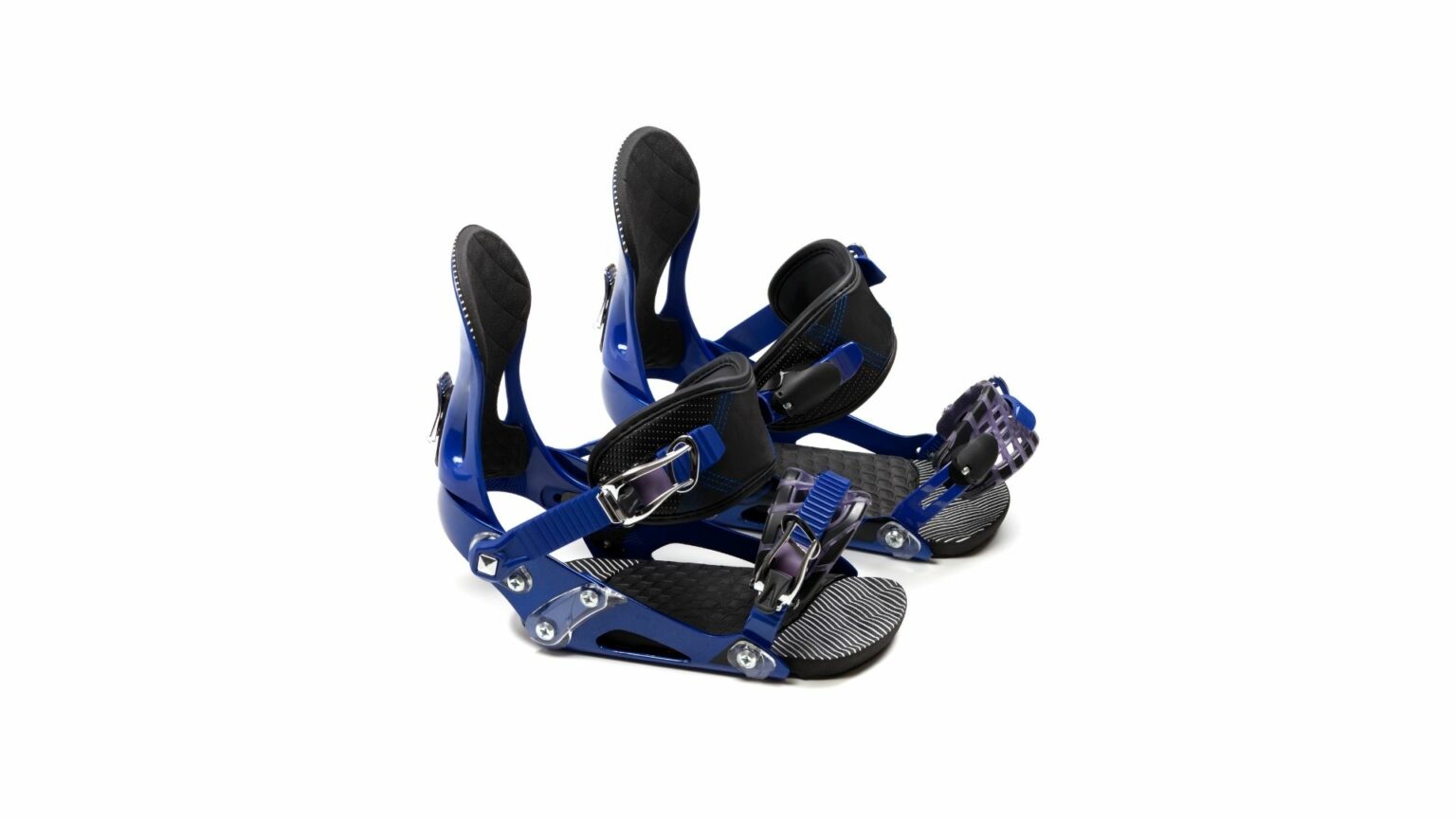
Snowboard bindings are divided into two main categories :
- Strap-in — bindings are a type of binding that uses nylon straps with buckles to secure the rider’s boots to the board. They use one high back, which holds the heel and lower calf in place. The second strap may go across the toe or around both toe and ankle. Staples bindings are available for beginners as well as expert riders, due to the wide range of adjustable features (back support, forward lean).
- Rear-Entry — bindings are usually the most expensive, but give you the best control and response. They have higher «cantilevers» that allow for more clearance for your boot size. This is achieved by having a straight bar that goes almost all the way up to your toe tips, which then connects to the pin that controls lean, pivot and height adjustment. This design is popular because it offers great support, along with smooth and responsive mobility.
Construction of Snowboard Bindings
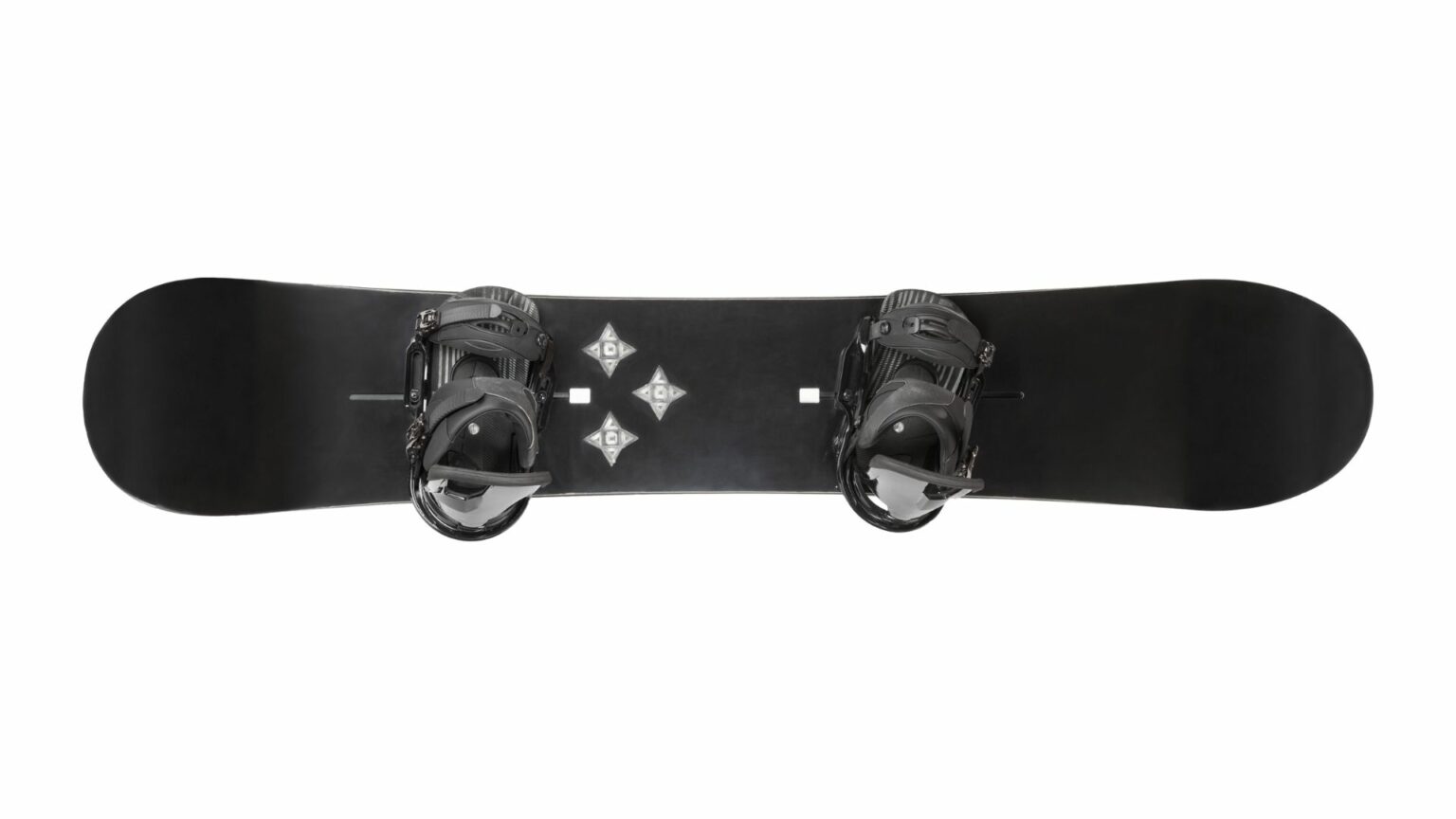
Snowboard bindings are the connecting points between the boots and the board. A snowboard binding is made up of several components: the baseplate, highbacks, lowbacks, and straps. Snowboard bindings should be assembled and adjusted to fit each rider’s boots and riding style before each use. As a rider begins to fall or crash, the structural integrity of her bindings is put to the test. The binding must be able to maintain its integrity during pressure and release in order to provide support and allow the rider to pop back up on her board.
Streps
Let’s talk about the bottom cap strap (BCS), also known as “Toe Cap Strap”. This strap is on the front of the boot, wrapping around it for comfort and stability. It helps align the foot for better placement in the heel, which transfers more power to the board. A bottom cap strap helps keep your feet firmly planted on the board while you are riding, making you more stable on your snowboard.
A traditional bottom strap is usually found at the base of your snowboard bindings below the reel. It’s sole purpose is to hold your boot in place. It does not include the ability to be used as a capstrap because of its placement. A traditional bottom strap will have 2 buckles, a larger one that locks in the leg, and another smaller one that secures it to the board. The design of these straps makes installation quick and easy. Some straps will also allow for add-on pieces such as toe straps, heel cinches and others for additional functionality.
Hybrid Bottom Straps work similar to the way Traditional Straps work. The main difference is that these straps tilt forward for use as a Cap-Strap so your feet never leave the strap. This hybrid or multi-tool strap is a new idea for snowboard bindings and will work in two different ways. The first way is to be used like a traditional strap; over your boot and under the base of your board. The other way is to flip the strap forward, essentially acting similar to a cap-strap or cinch strap. With its versatility, this strap can be used for many foot/binding combinations!
The top strap is one of the most important pieces on your snowboard bindings. This strap is large enough that it wraps around the leg securely. Without it, the bindings wouldn’t hold. Anybody can use a top strap and harness to their advantage. It relieves stress on the leg and provides optimum support while you are riding and landing. A lot of riders will tell you that they prefer the security of bindings with a top strap over those without any top straps at all.
One-piece strap. Often found on modern bindings and usually made of neoprene, it is a one-piece strap that covers your boot at the bottom of the toes and along the ankle, fastening to the top of the boot with a Velcro strap. The strap is designed mainly to keep one’s boots from flying off when hitting difficult jumps. Some manufacturers are producing specialized Highback One Piece Straps for use on Snowboard Racing Boots or Alpine Ski Boots, which feature a forward lean adjustment so you can adjust how far forward or back your boot toes are flexed when strapped in.
Highbacks
A highback is a metal cap, covering the area behind your boot on a snowboard binding. They are one of the most important components of a snowboard binding, as it controls the edges of your board, which are located at the heel. If you have dull edges on your board, it could be the result of worn highbacks. If your edges are sharp and cutting into the snow, it’s a sign that something isn’t working correctly with your bindings.
- A heel plate is a vertical plate that runs from your heel to the bottom of your shin. These plates are meant to protect you from scrapes and bruises while riding the slopes. Also featured are mounting points for additional attachments.
- It controls the edges of your board, which are located at the heel. By adjusting your highback up and down, you can change the amount of edge on your board to suit your riding preferences.
- Stiff and tall hibacks are designed for better control and speed. They also help you ride faster, since stiffer backs need less effort to move forward, propelling you further.
- Softer and shorter flexing hibacks are designed for park/freestyle riding. They’re usually lighter, more flexible, and more forgiving than hibacks designed for freeride/mountain styles.
- Hi-back bindings are designed to provide a customized fit and superior comfort. This hi-back set-up gives you complete control over your board, letting you adjust your bindings right on the fly depending on where you’re riding and what your preferences are.
- The backless bindings provide a feeling closer to skating. They increase ankle mobility and loosen control of the board. As a result of the increased mobility and freedom, the rider is able to utilize more parts of his body to propel himself in different directions.
The Base
The base of snowboard bindings is made from hard plastic, superior materials; this material was used after many test and measurements in order to find the perfect combination between durability and elasticity. Due to the fact that the base of snowboard bindings are used in different conditions and terrains, it needs to hold perfectly on snowboards no matter what.
- The base is the main link between the bindings and the snowboard. It provides a smooth, predictable interface between the two pieces of equipment.
- The bases are made of different materials with different ratios of strength and stiffness. These include glass fiber, plastic, balsa wood and metals. The bases primarily consist of a system of laminates. Laminate is a construction technique made from two or more layers of material adhered together with glue. When constructing the bases, the materials used have to be stiff, impact resistant and have high resistance to compression and flexion.
- Cushioning in the base ensures comfort and proper energy transfer, while heel cushioning can help prevent pain or discomfort in your heels when you come to a stop.
- Canting is a slight tilt of the foot which makes your knee lean slightly forward for a more natural stance. The canting angle usually is 8-15 degrees in normal alpine bindings, and 7-20 degrees in freestyle bindings as the need for a more powerful forward lean increases. It can be defined by left/right or front/back angle.
Buckley
The buckle is the central part of a snowboard binding, consisting of dual levers that open and close to adjust the state of the securing strap on each side of the binding. The buckle is placed offset from center on both sides in order to actuate using foot pressure when rotating either right or left in order to tighten or loosen the bindings.
- The buckle is the most important part of snowboard bindings. Even though there are many different types of buckles, they all fulfill the same basic task: to fasten the strap and adjust its degree of compression. Depending on the shape and design of the buckle, it can be adjusted to the leg width and adjusted freely.
- Durable buckles are in demand today. In particular, the bindings for popular snowboards must have strong buckles. That is why they are made of aluminum.
- For snowboard binding should choose a buckle that is large enough not to cause problems when fastening with a glove or mittens and have a smooth running, which gives you some kind of guarantee for further performance.
When choosing a buckle should pay attention to its quality and durability. Winter athletics requires high reliability: the binding is often used when hands are cold and stiff and sometimes even in difficult weather conditions. As a result of all this, the quality of workmanship must correspond to high standards in order not to limit freedom of action and increase the risk of injury when practicing winter sports.
Compatibility of Bindings With Snowboards Boots
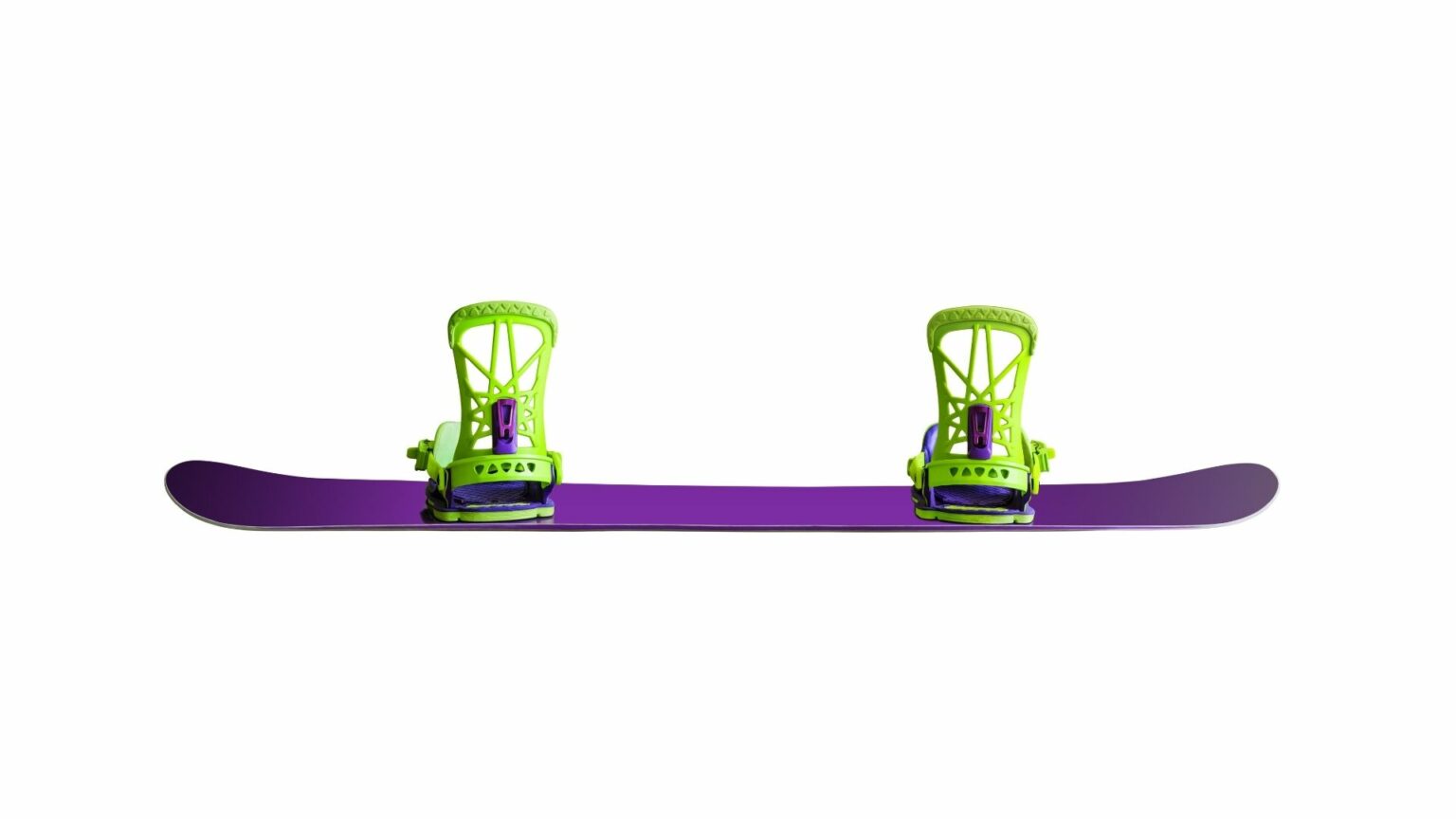
In order to get the best performance out of your snowboard boots, it is extremely important to find the right size binding for your boots. This is a tricky task, as you have no real way of telling what size works best with the boots until you actually go onto the slopes. The only way to find out what bindings fit your boots is to read the manufacturer’s sizing chart, which lists all the bindings that are compatible with a specific size of boots.
Bindings can be either compatible or incompatible with the boots, depending on their sizes. Fitting your snowboards bindings with your boots is one of the most important things you can do to improve how well your setup performs. Because you want a good and solid connection to the board so that you don’t slip while riding, you should be sure that the bindings are compatible with your boots. Bindings are a very important component of a snowboard setup.
The bindings make it possible for the rider to stand on his snowboard and thus make turns by shifting their weight from one foot to the other. Bindings are adjustable in many different ways, meaning they have to fit well with boots. A few different things need to be taken into account when setting up your bindings and its components. Bindings should not be too tight, but neither too loose.
If they are too tight, they will be painful to wear and may cause skin blisters; alternatively, if they are too loose, they will not hold your feet in place properly and you may lose balance and are at risk of falling depending on the quality of the bindings. Before placing the binding on the boot, you should mark the place where one of the two screws will go.
The screws are to be placed in holes that correlate with this mark. In order to make sure where to put them, first find out where exactly on your boot the screws will have their largest contact area. Avoid putting the screws close to heel or toe area as this would reduce their holding power. When these points are located, you should then bring back the binding and place it on your foot to make sure that you have measured the distance correctly.
Fit is the most important consideration in snowboarding bindings. Your boots should fit you comfortably when you are standing or sitting with your feet flat on the floor and your back straight. The bindings should be easy to close and loosen, but not so easy that you can accidentally step out of them without exerting extra effort. The buckles should close easily and stay secure, yet also be easy to open.
The heel part of each binding strip should fit snugly against your boot heel without any extra effort. The top portion of each binding strap should not feel loose, but it also shouldn’t feel too tight where it cuts into your ankle. If everything feels good, then you’ve got a proper snowboard binding fit!
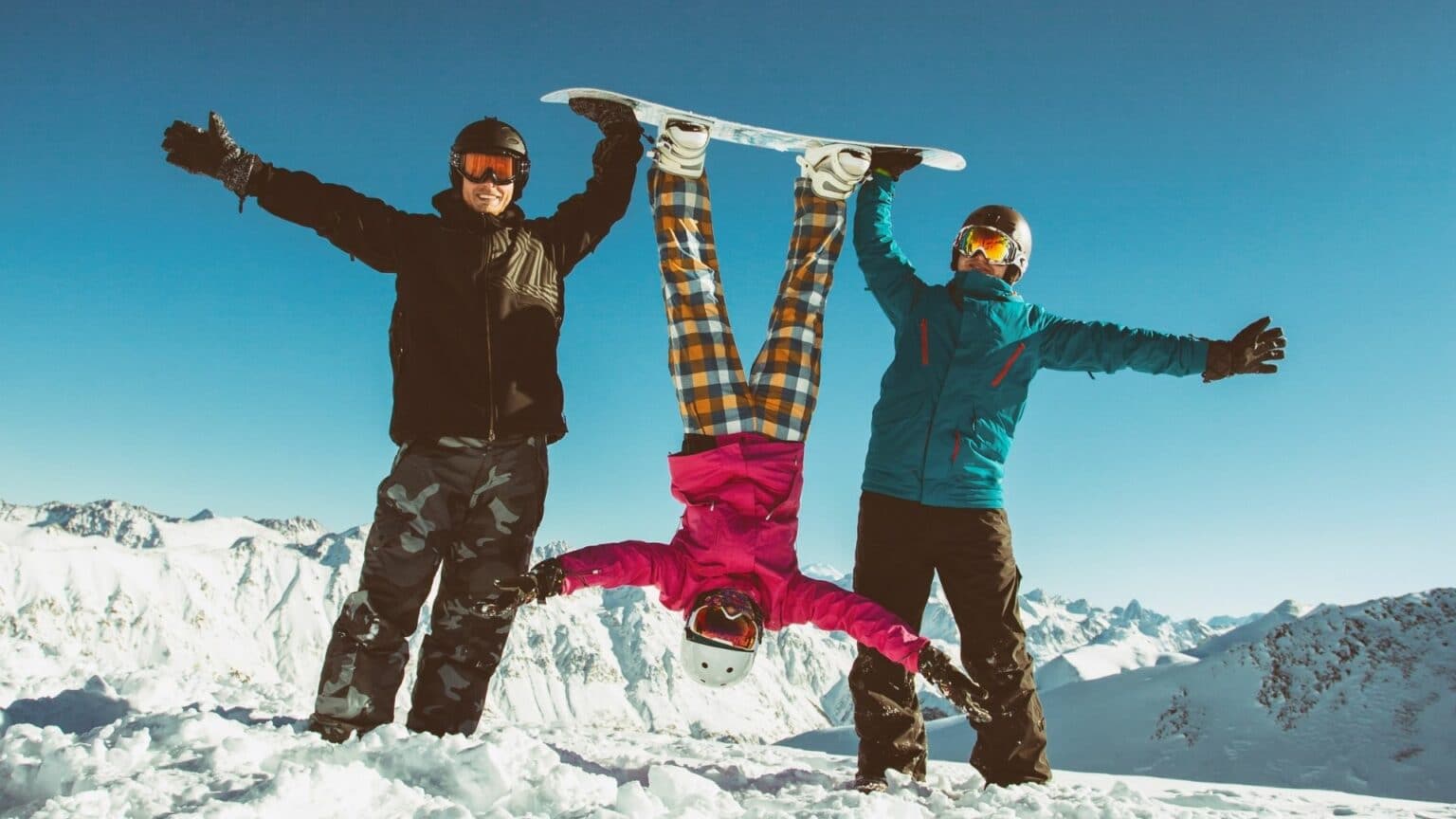
Snowboard bindings have been in the spotlight for their innovative ways to improve the rider’s experience and control over their board since the inception of snowboarding. Since then, bindings have barely changed to bring the rider closer to parallel with their board, as most riders find it fun to ride like this. Many also work on a release system that is used in the case of an emergency. The system is activated when the rider feels that they may lose control. Modern bindings are made of steel or aluminum and can spin on all axes to allow for the change in ride, while maintaining safety precautions with modern tech.
When you are deciding which bindings to use, it is important that you ask yourself a few questions first. If you intend on just taking your board out for an afternoon cruise along some smooth trails, then any of the entry-level bindings will be just fine. However, if you plan on hitting some of the more challenging slopes or if you are an avid skier or snowboarder, then going for something a little more advanced will be a better investment.
You Also May Like
Copyright 2026 © Top Sports For Kids
Topsportsforkids.com is a participant in the Amazon Services LLC Associates Program, an affiliate advertising program designed to provide a means for sites to earn advertising fees by advertising and linking to Amazon.com.

